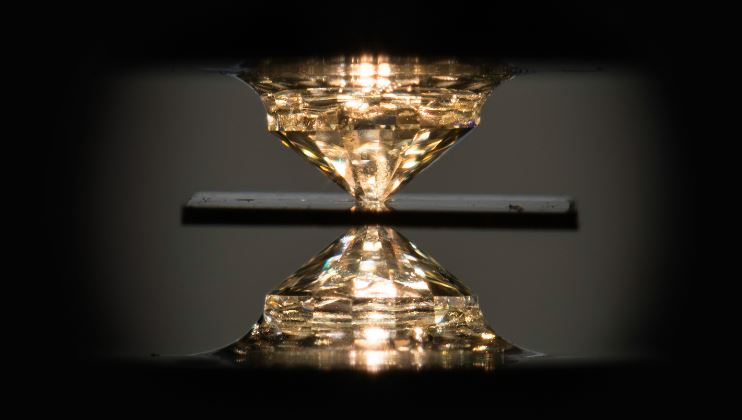I was interested and excited to hear the news about a recent discovery in physics — a superconductor that works at room temperatures. Sadly, this turned out to be yet another false alarm. Like cold-fusion, I guess this is something of a holy grail that, if actually possible, could change all of humanity. As a matter of fact, I think those two things (cold-fusion and room-temp superconductors) could be the thing that saves us all in the end (in the secular sense — as a Christian, I will always maintain that our ultimate salvation comes from Jesus).

The thing about superconductors is that if you can get them to work at higher temps, you can do things like transmit energy long distances without losing any of it. A quick Google search tells me we lose 5% of our energy annually through power lines, but I bet it’s much more. There are other applications too, of course. Like maglev (magnetic levitation) transportation. Imagine a train that glides effortlessly over magnetic tracks. It’s available on a small scale, but being able to do it over great distances without energy loss through the friction of the train on track would be a tremendous advance. It could finally open the possibility of transport between major cities at speeds comparable to air travel, using far less energy and generating next to no carbon emissions.
And if we can get cold-fusion working? The advances we could make are unimaginable.
So what am I doing here writing about something about which I know so little (and am far from qualified). Well, this morning I had an MRI done at a nearby hospital (just checking if my brain is still there), and I remembered reading in an article about room temp superconductors that their discovery could also mean a lot in the field of medicine. I used to think that MRIs should be a lot cheaper than they are. I mean, sure, the actual equipment has to cost a boatload, but once someone gets one in place, they should be able to crank out MRIs left and right. “The thing can pay for itself in no time!” I’m thinking. But no, it doesn’t work like that. Because MRIs use superconducting magnets, and superconducting magnets need extreme low temperatures to function effectively. Liquid helium low temps. I looked that up. Helium turns to liquid at -269 degrees Celsius. That’s minus. As in minus 452.2 degrees Fahrenheit. So I was incredibly naïve in thinking you could set up an MRI machine in just any old place. Keeping helium in its liquid form can’t be cheap.
But imagine, if we could crack this code, it would change the world! And if we’re serious about this climate change thing, I would think job one of the world’s governments would be something tangible like this: Step 1 being to build more and better nuclear plants for the clean energy, as this will hold us over until Step 2) pour the collective power of the world’s governments into the development of cold-fusion and room temp superconductors. The problem now is that we’re doing far too little, and of that, it’s mostly just costly and inefficient means for governments to (literally and figuratively) control the power of their people. They say “electric cars everybody!” without considering how much power that will require and whether the power grid will handle that additional drain…or where that power even comes from (not solar or wind — both “green” energies that require a massive amount of “non-green” energies to produce and maintain). These are noble causes for sure, but all ring hollow without taking serious steps in the right direction when it comes to where our energy actually comes from and how we get it into our homes and transportation systems.
Nuclear now, and hopefully cold-fusion in the future, along with room temp superconductors, will put us on the right path. Until I hear anyone actually moving in that (or a similar) direction, I can’t take the alarmists seriously.
To wrap this up: I hate having to go through an MRI. It involves lying perfectly still for about 30 minutes, and of course, the minute I’m thinking “perfectly still” it becomes all the more agonizing. Every twitch. Every itch. Today I even felt like I had to sneeze, which would’ve ruined the whole thing I’m sure. MRIs are also very loud. They give you ear plugs, but I can only imagine what they would sound like without them.
Still, I did a few things to while away the time as I lay there. First off, I would count off the patterns of the scans. One of them was 11 short taps followed by 11 longer blasts. That went on for a while and I lost count of how many times that cycled through. Another was longer, deeper sounds of a little over a second apiece. Got up to about 135, then did the math — “that had to be over two minutes…almost there.” But for the most part, I would make up songs along with the beat. There was one sound that was like a screeching thrash metal riff that repeated several times and I kind of added a drum track (without moving). My favorite though was the one that reminded me of the opening riff in the Pink Floyd classic “Time” (which first hits about 54 seconds into this video). Made it through most of the song in my mind, and that sure can be helpful during a time in which you must lie without moving for 30 minutes. Almost made it bearable…

Last time I had an MRI I said a rosary on my fingers. It works well for me.